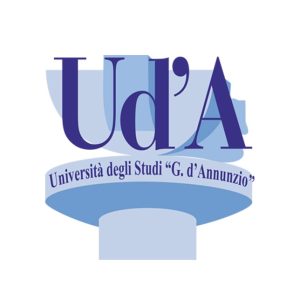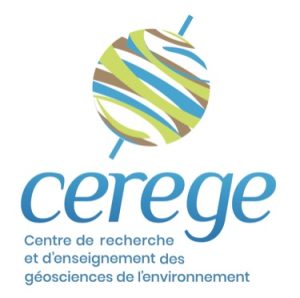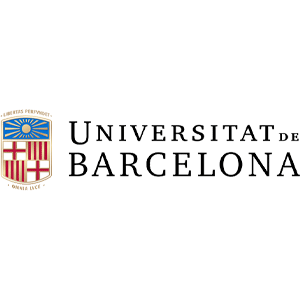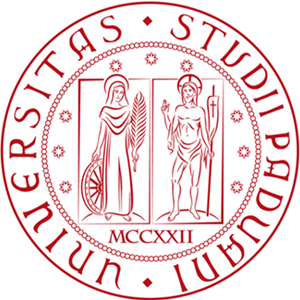Consortium Beneficiaries are the legal entities that signed the Grant Agreement with the EU Commission and have the responsibility for the proper implementation of the TREAD action. They contribute directly to the implementation of the research, transfer of knowledge and training activities by recruiting, supervising, hosting, training and seconding TREAD researchers.
Website: www.unich.it
The Institution
Università “G. d’Annunzio” Chieti-Pescara is a classical public university of the Italian system, devoted both to didactic and scientific research. It has technical and administrative personnel and resources in addition to excellent facilities for hosting researchers and PhD students. The hosting research group produces top-quality research in the field and plays a key role in the focus area of Earthquake Geology and Seismic Hazard.
The Supervisor
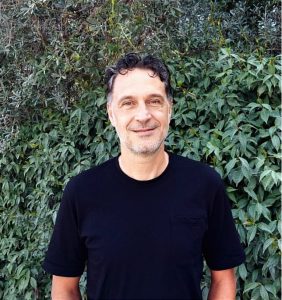
Prof. Bruno Pace
Prof. Pace is Associate Professor of “Seismology” and “Seismic Hazard and Risk”. He is also co-founder and member of the executive committee of the Fault2SHA working group of the European Seismological Commission (fault2sha.net). Over the last 20 years his main research topic has been seismic hazard. He has contributed most effectively to better constrain seismic hazard in Italy and, in general, in areas where faults have long recurrence times. Over the last 10 years he has been supervising tens of MSc students in the areas of seismotectonics, seismic hazard, and seismology, as well as two PhD students and three post-doc researchers on active tectonics and seismic hazard themes. Additionally, he is involved in teaching bachelor and master’s university courses (Geology and Engineering) and in PhD supervising in international research projects. He has been involved in national and international interdisciplinary research programs (Civil Defence Department, MIUR, bilateral initiatives, ANR, UNESCO and EU projects) and he has worked on research projects funded by local authorities and private companies, collaborating with international and intersectoral researchers. As of today, Prof. Pace has published more than 60 papers in peer-reviewed journals (h-index 21), has presented more than 150 abstracts at national and international conferences, meetings, and workshops, and has participated in invited talks at national and international Institutes and Universities.
Website: www.cerege.fr/en/
The Institution
International multidisciplinary research and teaching centre, the CEREGE covers almost all the Environmental Geosciences from Martian mineralogy to water treatment, tectonics, paleoclimatology, geochemistry, physical chemistry and process analysis.
The CEREGE is composed of four thematic teams of a set of 18 platforms and a transverse modelling centre.
The Unit (UMR7330 of the CNRS) belongs to the OSU Institut Pythéas, component of Aix-Marseille University (AMU UM34), Observatoire des Sciences de l’Univers du CNRS (INSU) and having as other guardians the IRD, l’INRAE and the Collège de France (Chair of Climate and Ocean Evolution).
A centre of excellence in terms of human skills and instrumental capabilities, CEREGE’s research is based on laboratories and analytical platforms, the inter-team collaborations and an extensive network of national and international collaborations. The thematic teams are supported by state-of-the-art laboratories, a multiple areas of expertise and complementary, combining field observation techniques with analytical experimentation and numerical modelling.
Ideally located in the heart of the Technopôle de l’Arbois in Aix-en-Provence and in the centre of Marseille on the St Charles Campus, CEREGE benefits from optimal conditions for develop its networks and partnerships.
The Supervisor
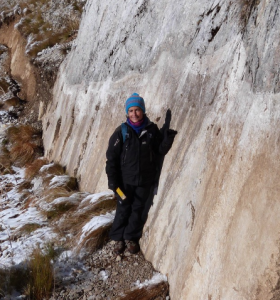
L. Benedetti
L. Benedetti is a research director at CNRS-CEREGE. Her research aims at understanding the link between plate tectonics, earthquake occurrence and landscape building. In particular she has developed the 36Cl method on limestone fault scarps and several applications on the use of cosmogenic nuclide for active tectonics to better constrain the chronological aspects related to continental deformation. She has a long experience on the Mediterranean active tectonics and has developed numerous collaborations in Italy over the last 15 years. She has coordinated the French participation and organized the fieldworks after the 2016 earthquakes in Italy. She has been PI of several funded projects over the last 15 years on seismic hazard in the Mediterranean (ANR QUAKonSCARPS, Labex OT Med project Riskmed, INSU, CNES projects) and she manages the 36Cl preparation laboratory at CEREGE since 2004. She is the adjoint director of CEREGE since 2023 and will become the director in 2024. She has supervised 20 PhDs students since 2004, 8 post-doctorates and 9 MSc.
Website: www.uu.nl/en/research/department-of-earth-sciences/research
The Institution
Utrecht University’s Faculty of Geosciences studies the Earth: from the Earth’s core to its surface, including man’s spatial and material utilisation of the Earth – always with a focus on sustainability and innovation. With 3,400 students (BSc and MSc) and 720 staff, the Faculty is a strong and challenging organisation. The Faculty of Geosciences is organised in four Departments: Earth Sciences, Human Geography & Spatial Planning, Physical Geography, and Sustainable Development.
The Department of Earth Sciences conducts teaching and research across the full range of the solid Earth and environmental Earth sciences, with activities in almost all areas of geology, geochemistry, geophysics, biogeology and hydrogeology. The department hosts a highly international tenured staff of about 50 scientists and more than 110 PhD students and postdoctoral researchers. Our research programme spans four intertwined themes: Climate & Life, Earth interior, Earth materials, and Environmental Earth Sciences. We house or have access to a wide variety of world-class laboratories. The department has its own in-house supercomputer as well as access to national supercomputing resources.
The department is located at Utrecht Science Park near the historical city centre external link of Utrecht. Utrecht is the fourth largest city in the Netherlands with a population of nearly 360,000 and forms a hub in the middle of the country. Its historical city centre and its modern central station can easily be reached from the Utrecht Science Park by public transport or by a 15-minute bicycle ride. Utrecht boasts beautiful canals with extraordinary wharf cellars housing cafés and terraces by the water, as well as a broad variety of shops and boutiques.
The Supervisor

Dr. Ylona van Dinther
Dr. Ylona van Dinther is associate professor in earthquake physics and tectonics at Utrecht University. Dr. van Dinther has pioneered bridging of time scales from tectonic time scales (millions of years) down to earthquake time scales (milliseconds to years) in numerical models. For this research dr. van Dinther was awarded the Jason Morgan Early Career Award from the Tectonophysics section of the American Geophysical Union and the Royal Netherlands Academy of Arts and Sciences (KNAW) Early Career Award. Dr. van Dinther research interests span the fields of tectonics, seismology, tectonophysics, earthquake, fault and rock mechanics, mantle dynamics and structural geology. The research principally aims at better understanding the tectonic and rheological controls governing the spatiotemporal occurrence of fault slip, ranging from earthquakes to slow slip and continuous creep. The main methods used are the cross-scale numerical models developed by her team, including the seismo-thermo-mechanical modelling concepts and applications. We combine these approaches with other earthquake or tectonics numerical or analytical models with geological and geophysical observations in various ways ranging from using predicting new, verifiable observations to loose or tight data constraints, or integrating them tightly in a statistically meaningful way. The current and future outcomes are important to improve natural and induced earthquake and tsunami hazard assessment. To explore the opportunities and limitations for earthquake hazard assessment and combine physics-based models with observations dr. van Dinther works on applying ensemble data assimilation, a statistical method adopted from weather forecasting, used to estimate and forecast the state of stress and slip on faults.
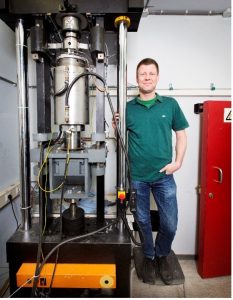
Dr. André Niemeijer
Dr. Niemeijer is an associate professor in fault and earthquake mechanics. His research is centered around the efffects of fluid on deformation in faults and how these relate to the occurence of earthquakes. He was awarded several individual research grants from the ERC as well from NWO (Dutch Research Council). In addition, he has been an active researcher in the NWO-funded programme DEEPNL which aims to better understand the consequences of human activities in the subsurface. He is the programme leader for the MSc programme Earth Structure and Dynamics and teaches in two courses within this programme. He also leads the second year BSc field work in the Pyrenees. He has supervised numerous BSc and MSc students as well as 10 PhD students and 5 Post-doctoral researchers. Currently, he (co)supervises 5 PhD students on the general topic of induced and natural seismicity. He has co-organized two international scientific meetings at UU (GeoProc 2019 and SaltMech X, 2022). As of today, Dr. Niemeijer has published 93 peer-reviewed papers (H-index 36), one book chapter and over 200 abstracts for national and international conferences.
Website: www.globalquakemodel.org
The Institution
The GEM Foundation is a non-profit, public-private partnership that drives a global collaborative effort to develop scientific and high-quality resources for transparent assessment of earthquake risk and to facilitate their application for risk management around the globe. Assisted by an initiative of the OECD’s Global Science Forum, GEM was formed in 2009 as a non-profit foundation in Pavia, Italy, funded through a public-private sponsorship with the vision to create a world that is resilient to earthquakes. GEM’s mission is to be one of the world’s most complete sources of risk resources and a globally accepted standard for seismic risk assessment; and to ensure that its products are applied in earthquake risk management worldwide.
The Supervisor
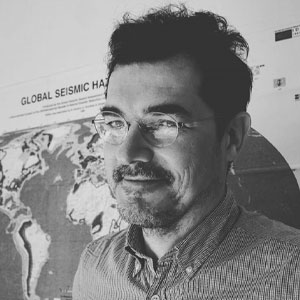
Prof. Marco Pagani
Marco Pagani is the Seismic Hazard Coordinator at the Global Earthquake Model (GEM) Foundation and adjunct professor at the Institute of Catastrophe Risk Management of the Nanyang Technological University in Singapore.
He received a Master degree in Geological Sciences and a PhD degree in Earth Sciences from the Università degli Studi di Milano. He has more than 25 years of experience in Probabilistic Seismic Hazard Analysis (PSHA), PSHA input model building, seismic microzonation and exploratory data analysis.
His research interests involve the creation of PSHA input models combining different information and new approaches, the development of PSHA calculation methodologies and their incorporation into openly accessible tools including the OpenQuake Engine. He was involved in several national and international projects dealing with seismic hazard and risk analysis as well as consultancy projects for seismic hazard assessment of critical facilities in Europe, Africa and Asia.
As part of his duties, he managed various national and international PSHA projects in South America, Caribbean and Central America, and Africa. At present, he is a member of the Technical Advisory Group (TAG) supervising the creation of the new national hazard maps for New Zealand and, coordinator the hazard work package of the European projects METIS and TREAD.
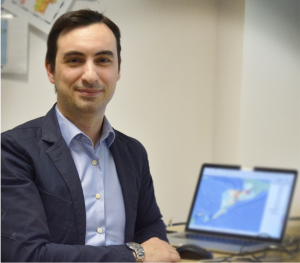
Prof. Victor Silva
Vitor Silva is the Seismic Risk Coordinator at the Global Earthquake Model (GEM) Foundation, and a Principal Investigator at the University of Aveiro. He leads studies in structural vulnerability and probabilistic seismic risk assessment in dozens of countries, and participates in a multitude of International, European and regional projects. His research covers the assessment of earthquake impact at the global scale, incorporation of the temporal component in earthquake risk, and exploration of machine learning technology in the assessment of earthquake hazard, vulnerability and exposure. He has authored more than 100 publications in international peer-reviewed journals and conference proceedings and was the recipient of the Shah Family Innovation Award by the Earthquake Engineering Research Institute in 2018, the Natural Hazards Division Outstanding Early Career Scientist Award by the European Geosciences Union in 2020 and Earthquake Spectra Outstanding Paper Award in 2021.
Website: www.globalquakemodel.org
The Institution
Univ. Grenoble Alpes is one of the major multidisciplinary French universities with 59 500 students (3000 PhD students), 3 100 researchers working in 100 research laboratories. With 10 000 foreign students, half of the Ph.D. students coming from all over the world, and more than 8 000 researchers visiting every year, UGA is an internationally engaged university.
It has been recently awarded by the EC with the ‘HR Excellence in Research Award’. UGA has won international recognition: top 150 in the Global Shanghai Ranking 2023 and in the top 10 of the best French university according to QS World University Rankings, especially in Earth Sciences (Shanghai: 24, NTU:39, QS: Top 50).
ISTerre (Institut des Sciences de la Terre / Institute of Earth Sciences) is a joint research unit between Univ. Grenoble Alpes, Univ. Savoie Mont-Blanc, CNRS & IRD, and Univ Gustave Effeil. It is one of the major lab in Earth Science in France with about 300 persons . It is organized in 10 research teams, the primary goal of our research unit is the physical and chemical study of the planet Earth through a combination of observations of natural objects, experimentation, and the modeling of complex processes.
The Supervisor

Prof. Céline Beauval
Céline Beauval is a senior researcher at the French National Research Institute for Sustainable Development (IRD), and at ISTerre in Grenoble, France. She received her PhD in 2003 from the University of Grenoble while at the French Institute for Radiological Protection and Nuclear Safety in Paris. Her research interests are related to probabilistic seismic hazard assessment (PSHA) : historical seismicity, earthquake catalogs, long-term earthquake forecasts, sensitivity of hazard estimates to uncertainties on the source and ground-motion models, testing ground-motion models and seismic hazard estimates against observations, and inclusion of site effects into PSHA. She has contributed to several European projects aimed at harmonizing seismic hazard assessment across Europe, in particular the new European Seismic Hazard Model ESHM20, and she served 4 years on the first Executive Committee of EFEHR. She is also strongly involved in Southern Countries (Southern America, Levant Fault region) to improve seismic hazard assessment through a better integration of earth science data and models.
Websites:
https://www.ub.edu/portal/web/earth-sciences
http://www.ub.edu/risknat/?lang=en
The Institution
The University of Barcelona (UB) is a public institution that was founded in 1450. The urban university has multiple campuses spread throughout Barcelona and the surrounding area on the eastern coast of Spain. The Diagonal Campus, where th Earth Science faculty is located, is located to the south of the city, wll communictaed with public transport and surrounded by living neighbourhoods. The UB boasts of a student body of more than 76.000 and a research and teaching staff of almost 6.200 members. together with some 2,400 administrative and service staff, accompany you through the different stages of your university studies. These are the most notable figures that summarize our academic, research, transfer and internationalization activities over the last academic year. Degrees are offered in 72 different areas of teaching with 170 postgraduate and 46 doctorate programs as well as continuing education courses. In the last decades the UB has been ranked the first Spanish university in scientific quality and productivity, being considered among the 200 best world universities. It is the largest of the six universities of Barcelona and of the ten in Catalonia, managing an average of 150 European projects per year. The Earth Science Faculty Bachelor’s degrees currenly last four years and are offered in Marine Sciences, Geology, and Geological and Environmental Engineering, the latter in conjunction with the Polytechnic University of Catalonia. Master’s degrees are offered in Science and Integrated Management of Water, Reservoir Geology and Geophysics, and Mineral Resources and Geological Hazards. The Faculty also teaches two interniversity master’s degrees: Paleobiology and Fossil Record (UAB-UB) and Oceonagraphy and Marine Environmental Management (UB-UPC). Finally, a doctorate is the highest form of academic qualification available to students and grants eligibility to teach and research at university level. At the Faculty of Earth Sciences, doctoral studies provide advanced training in research techniques and encompass participation in courses, seminars and other activities to further this training.
The Supervisor
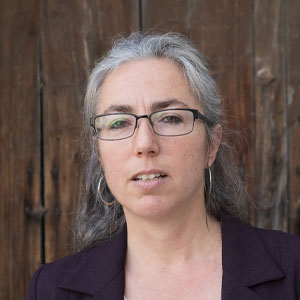
Prof. Maria Ortuño
María Ortuño is full-time professor at the University of Barcelona Earth Science Faculty, being part of the research group RISKNAT (Institut Geomodels). Her work is two folded, combining teaching and research activities: she is involved in two bachelor’s degrees (Geology and Marine Sciences) and three MSc degrees (Geological Hazards, Strategic Security Management and Education for Secondary Schools). The main topics of her research are geological hazards and landscape evolution, with special emphasis in on paleoseismology, tectonic geomorphology and slow gravitational movements. Maria has been involved in several initiatives devoted to improve the seismic hazard definition in the Pyrenees and in Eastern Iberia, such as the QAFI data base, PREVENT project, Spain-SSHAC (for the Nuclear Regulatory Commission) and the ESC-group Fault2SHA. Her field experience includes stays in EUA, Kamchatka, Canada, Nicaragua, Czech Republic and Mexico, where she worked as a post-doctoral researcher during 2 years at CGEO (UNAM-Queretaro). Maria was responsible of one of the groups involved in the new data collection and analysis (NDCA) for the SSHAC Project in Vandellcó and Ascó Nuclear facilities. She has been in charge of the organization of the IV Fault2SHA meeting in Barcelona and part of the scientific and organization committees of Iberfault (2010; 2018; 2022) and PATA-days of INQUA (2012; 2022) meetings. At Present, she is the main leader of the IGCP-UNESCO project 669 devoted to seismic hazard of megacities in Latin America. Regarding outreach activities, she is one of the authors of the book “La Tierra, un planeta inquieto” (“The Earth, a restless planet”, ed. Univ. Barcelona) and behind of the production of the Short Outreach Documentary on Earthquake Geology aimed to child and young population. María has supervised 19 Master thesis and 2 PhD thesis (Ferrater, 2016; Gómez-Novell, 2021) up to date, and at present is the advisor of 2 ongoing PhD on active tectonics at the Eastern Betics and the Pyrenees. Since 2020, she is part of the Gender Equality commission of the Earth Science Faculty.
Website:https://www.unipd.it/
The Institution
Dating back to 1222, the University of Padua (UNIPD- Università degli Studi di Padova) is the third oldest University in the world. UNIPD is one of the largest (ca. 60.000 students) and leading Universities in Italy and has a consolidated reputation for scientific excellence: Galileo Galilei, the founder of modern Science, was professor at the University of Padua. UNIPD has 32 departments, 40 doctoral degree courses and 44 interdisciplinary research and service centres and covers an exceptionally broad research scope (Engineering, Physics, Chemistry, Material Sciences, Life Sciences, Medicine, etc.). The University has one of the largest scientific libraries in Europe (over 10,500 scientific journals) and the University Language Center organizes Italian Language courses for interested Ph.D. students. The work will be carried on at the Department of Geosciences, one of the best Departments in Earth Sciences in Italy for scientific production according to the Italian Ministry of Education. The Dept. of Geosciences owns all the field (UAV, photogrammetry lab, etc.), experimental rock deformation (rotary shear machine equipped with a unique hydrothermal HT-HP vessel, uniaxial and triaxial machines), microanalytical (state-of-the-art Field Emission Scanning Electron Microscope equipped with STEM, FIB, CL, EBSD, WDS, etc.; X-Ray Powder Diffraction, X-Ray Fluorescence, micro-Raman Spectroscopy, White-light interferometers, etc.) and computational facilities (HPC cluster equipped with 1 full shared-memory Superdome Flex 8s (224 cores, 6TB RAM) and 4 distributed memory Proliant XL170 Gen10 (each with 28 cores, 320GB RAM ) to achieve the goals of the proposed Ph.D. project.
The Supervisor
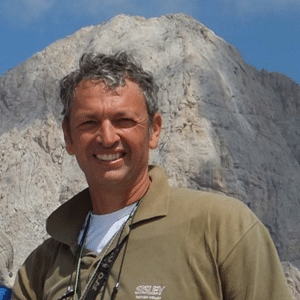
Prof. Giulio Di Toro
Giulio Di Toro (55 years old) is Full Professor in Structural Geology at the University of Padova and Research Associate at the Istituto Nazionale di Geofisica e Vulcanologia (INGV). Since 1999, Giulio focused on the study of earthquake mechanics and seismic faulting by integrating field studies of seismogenic faults with experiments that reproduce in the laboratory the deformation conditions along a fault during the seismic cycle and, microstructural/geochemical investigations of natural and experimental fault products. The results of these activities, disseminated in > 130 papers (https://scholar.google.it/citations?user=-ui_mNAAAAAJ&hl=it&oi=ao) and > 600 contributions at international meetings and seminars, have been applied by his research group also to the mechanics of landslides and to human-induced seismicity (e.g., CO2 underground storage and, recently, geothermal energy). A second result of these research activities has been the installation, thanks to two European Research Council Grants (ERC StG USEMS; ERC CoG NOFEAR) and other Italian grants (Italian Civil Protection, Fondazione CA.RI.PA.RO) of SHIVA (Slow to HIgh Velocity Apparatus) at INGV in Rome and of RoSA (ROtary Shear Apparatus) at the Dept. of Geosciences in Padova. These two complementary machines allow his research group to investigate the seismic cycle over a wealth of environmental conditions, including High Temperature-High Pressure hydrothermal conditions. These scientific and technological results are due to the continuous collaboration with colleagues with different background (geologists, experimentalists, engineers, physicists and seismologists) and age (from B.Sci. students to senior scientists). Giulio gives primary importance to supervision: since 2006, he supervised 16 Post Docs, 15 Ph.D. and 43 M.S. and B.S. students. Several of them obtained permanent positions in the Academy or in the industry and were awarded of European Geoscience Union Medals, Marie Curie Fellowships and relevant grants (EU -ERC, US-NSF, CH-Ambizione, etc.).
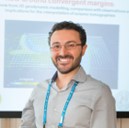
Prof. Manuele Faccenda
Manuele Faccenda (43 years old) is Associate Professor in Solid Earth Geophysics at the University of Padova. His research activities aim at understanding the Earth’s long-term dynamics and internal structure through numerical modelling of micro and macro scale geodynamic, seismological and petrological processes. The multidisciplinary scientific background is expressed also in the teaching activities that encompass topics in geophysics, geodynamics, geology and numerical methods for geoscientists. Manuele is author and co-author of 50 scientific articles, including 4 review papers, and has regularly presented the results of his research in over 100 contributions in international meetings and seminars. This research output has been awarded, in particular, of the 2013 Flinn-Hart Award, the 2015 Arne-Richter Award, and the 2017 ERC Starting Grant. The latter has allowed the installation at the Department of Geosciences of a HPC cluster equipped with full shared memory and distributed memory machines, of which he is responsible. Manuele is currently collaborating with colleagues from different international (e.g., UCL, Uni. Minnesota, Uni. Oregon, Uni. Paris Sud) and national research institutes (INGV-Bologna, INGV-Catania). Over the years Manuele has supervised or is supervising 4 PhD students, 5 PostDocs, 4 M.S and 4 B.S, most of which are currently working in the Academy.
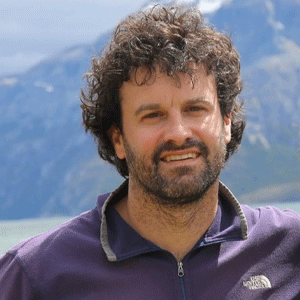
Michele Fondriest
Michele Fondriest (36 years old) is a fixed-term researcher (since January 2023) in structural geology and rock mechanics at the at the Department of Geosciences of the University of Padova. His research focuses on the study of the internal structure and mechanics of seismogenic fault zones in the upper crust. He tackles this topic at first, as structural geologist, based on robust field structural surveys of exhumed fault zones in different terrains and microanalytical study of natural fault rocks. Inspired by field observations, he investigates the mechanical behaviour of rocks through rock deformation experiments, mostly conducted under high co-seismic strain rates. A large part of these activities is targeted at active seismogenic faults in carbonate rocks, which are the source of most destructive earthquakes in Europe (i.e. the Mediterranean area). Michele, as MSCA fellow (project DAMAGE: https://cordis.europa.eu/project/id/839880), combined detailed structural surveys and near-surface geophysics to quantify the heterogeneous distribution of rock deformation along seismogenic faults of the Italian Central Apennines. Michele is also currently active in the study of fluid rock interaction and rock mechanical recovery assisted by fracture sealing via mineral precipitation (individual grants: STIFF- STARS@UNIPD and REACT-PNRR YR-MSCA).
To date, his activities resulted in 21 papers, > 40 contributions at international meetings and seminars (https://scholar.google.com/citations?user=4kWJH6AAAAAJ&hl=it&oi=ao). In addition, Michele co-tutored 9 master and 2 PhD thesis during his post-doctoral activities at Padova, Manchester and Grenoble-Alpes universities.

